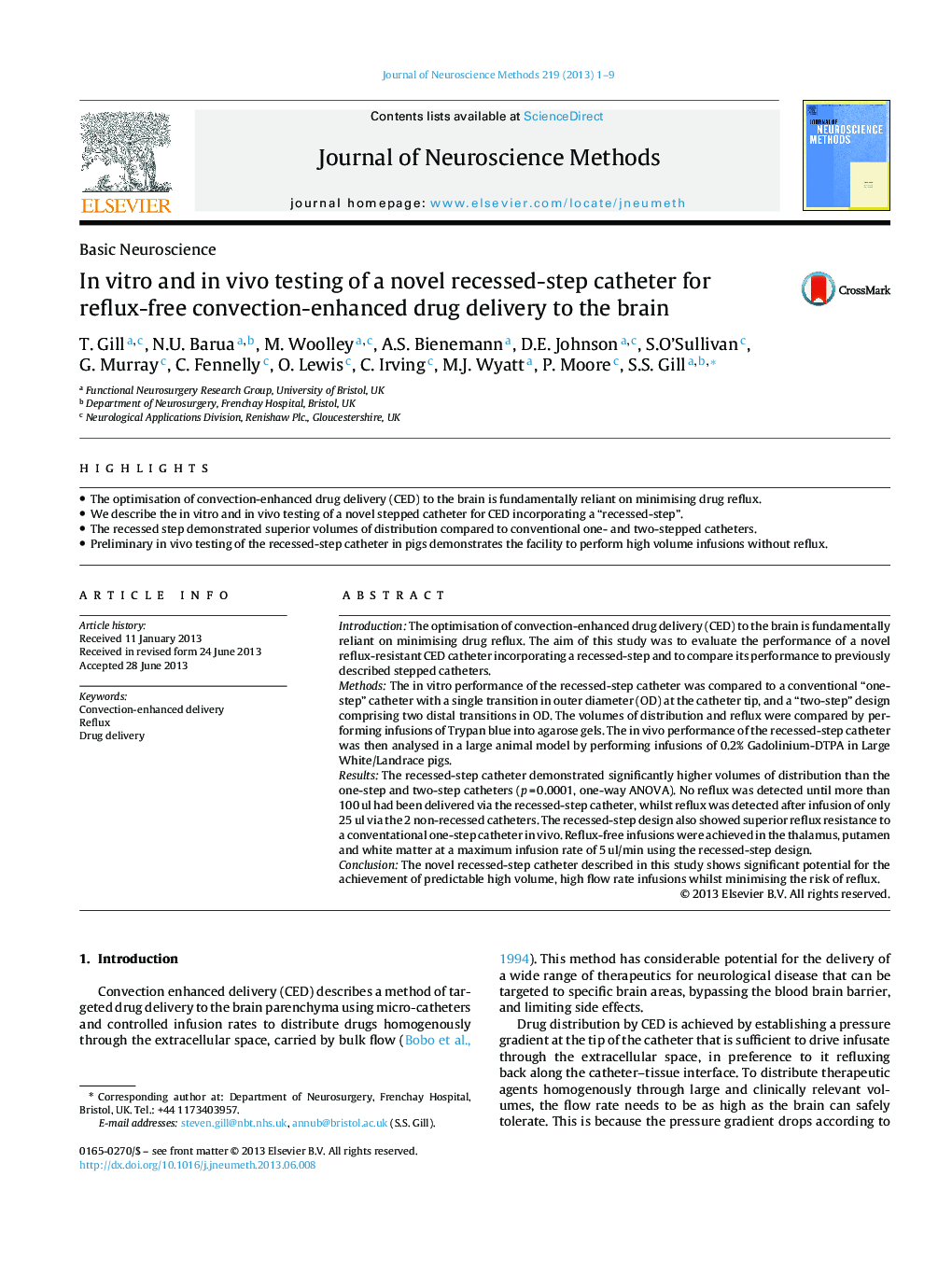| کد مقاله | کد نشریه | سال انتشار | مقاله انگلیسی | نسخه تمام متن |
|---|---|---|---|---|
| 4335041 | 1295117 | 2013 | 9 صفحه PDF | دانلود رایگان |

• The optimisation of convection-enhanced drug delivery (CED) to the brain is fundamentally reliant on minimising drug reflux.
• We describe the in vitro and in vivo testing of a novel stepped catheter for CED incorporating a “recessed-step”.
• The recessed step demonstrated superior volumes of distribution compared to conventional one- and two-stepped catheters.
• Preliminary in vivo testing of the recessed-step catheter in pigs demonstrates the facility to perform high volume infusions without reflux.
IntroductionThe optimisation of convection-enhanced drug delivery (CED) to the brain is fundamentally reliant on minimising drug reflux. The aim of this study was to evaluate the performance of a novel reflux-resistant CED catheter incorporating a recessed-step and to compare its performance to previously described stepped catheters.MethodsThe in vitro performance of the recessed-step catheter was compared to a conventional “one-step” catheter with a single transition in outer diameter (OD) at the catheter tip, and a “two-step” design comprising two distal transitions in OD. The volumes of distribution and reflux were compared by performing infusions of Trypan blue into agarose gels. The in vivo performance of the recessed-step catheter was then analysed in a large animal model by performing infusions of 0.2% Gadolinium-DTPA in Large White/Landrace pigs.ResultsThe recessed-step catheter demonstrated significantly higher volumes of distribution than the one-step and two-step catheters (p = 0.0001, one-way ANOVA). No reflux was detected until more than 100 ul had been delivered via the recessed-step catheter, whilst reflux was detected after infusion of only 25 ul via the 2 non-recessed catheters. The recessed-step design also showed superior reflux resistance to a conventational one-step catheter in vivo. Reflux-free infusions were achieved in the thalamus, putamen and white matter at a maximum infusion rate of 5 ul/min using the recessed-step design.ConclusionThe novel recessed-step catheter described in this study shows significant potential for the achievement of predictable high volume, high flow rate infusions whilst minimising the risk of reflux.
Journal: Journal of Neuroscience Methods - Volume 219, Issue 1, 30 September 2013, Pages 1–9